Grimsby Minster. Not really done justice by this photo.

Grimsby Minster. Not really done justice by this photo.

No. 1 in an occasional series.
Daniel Craig may be moving nearby, according to the Grimsby Evening Telegraph.
Have you seen Bond Star Daniel Craig in the area?
Speculation surrounding the actor’s move to the area has also been fuelled by reports that he was seen drinking in the Wheatsheaf in Louth on Friday evening.

It is one of those coincidences that as I was visiting family, thinking about the decline of my coastal home town the Centre for Social Justice was publishing its report Turning the Tide on the decline of coastal towns. I only came across it a few days ago, but it makes interesting reading and reflects a lot of my thoughts about the problems these towns face. (Today’s publication by the Office of National Statistics on deprivation in seaside resorts further illustrates the problem.)
There are huge differences between Wandsworth and the areas featured in the CSJ report (and indeed my home town), not least that we benefit from the opportunities that accrue from being in inner London. While not being complacent about the challenges faced here, it’s worth remembering that the areas we considered the most deprived in Wandsworth would be seen as fairly average in many of these places. However, as the report opens “cities have come to embody how we view modern deprivation and poverty. Yet some of the most pronounced disadvantage in our country exists away from the big cities.”
The report covers five coastal areas: Rhyl, Margate, Clacton-on-Sea1, Blackpool and Yarmouth. Yet they share a similar story highlighted in the case stories. They were all popular tourist destinations for much of the 20th century (in 1920 more than 1-in-10 of the English and Welsh population visited Blackpool) but cheap travel killed off the tourist industry in each.
What was left was a lot of cheap accommodation and bed-space, which started a vicious cycle. The cheap accommodation became a magnet for those with few other opportunities, several of the towns, for example, found themselves being advertised to prisoners on release. This began a cycle, with increasing numbers of people reliant on benefits moving in, property values dropped further still creating a cycle which resulted in a populations that had disproportionate high levels of ex-offenders and benefit claimants combined with disproportionately low aspirations and economic opportunities.
The problem for them is not affordable housing, it’s that housing is too affordable.
It’s exactly the idea I heard being proposed when I was up north, and exactly the idea I found bizarre. When there’s no shortage of residential property, why build even more in your most deprived area?
Where the report is lacking, however, is any sense of what successful coastal resorts have done to prevent such a dramatic decline. It acknowledges places like Brighton and its ‘Silicon Beach’ or Bournemouth and its financial sector, but doesn’t attempt to reflect on what made them attractive investments. It might just have been luck, geography would have played a part, but there would also be something else at play.
It’s easy to speculate that Brighton’s culture helped encourage the digital and creative sector to locate there. It’s harder to see Bournemouth’s attraction to the financial sector2. However, in both cases I suspect there was a strong element of the local authority creating a strong identity and business case–whether by design or not–that encouraged businesses to locate there.
It’s the vision thing. And just as it seems absent in Grimsby, it appears absent in each of the five areas in the CSJ case studies. The English tourist may still want to eat, drink and behave in exactly the same way on holiday as they do at home. But they want to do it with more sun and higher temperatures than this country can offer. These towns must know they can’t fight the climate and win, but they still haven’t identified the fights they can win.
The CSJ’s report focuses, unsurprisingly, more on the lessons of process that can be learned: how the benefits system might enable people to climb out of deprivation, how education opportunities can create aspiration, and how social reform can create stability and resilience in communities. Yet there are wider lessons that are applicable anywhere, the importance of a mixed community is one, as is a vibrant, and varied, property market.
Above all there has to be leadership and a sense of direction, creating a financial centre in Bournemouth must have seemed crazy, but it took someone to take the first step in that direction (I remember the idea of a diplomatic quarter in Nine Elms seemed fairly barmy once), because if the local leadership can’t offer a sense of purpose and aspiration, it’s hardly surprising the people living there don’t have one either.
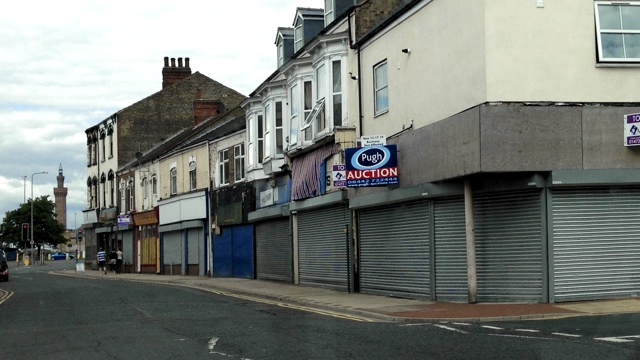
Nick Boles recent suggestion that empty retail be more easily converted into residential property left me somewhat conflicted: part of me felt he was right, local authorities should be able to do what they want with their local plans. Yet a bigger part of me couldn’t help thinking our town centres and high streets need protecting and developing, they need champions not quitters.
Admittedly my feelings were coloured by the fact I was visiting my family in the Grimsby area when I heard it, going through the predictable bout of depression I experience upon seeing how my home town has declined. Feeling, as I always do, a strong sense that the local council has brought about a lot of that decline with planning policies that lack vision or purpose.
Like so many areas, the town had its historic heart ripped out during that awful period of the fifties and sixties when the artifices of Victorian success were demolished in favour of modern brutalist architecture. Grimsby compounded this in eighties and nineties by developing the brutalist town centre into a more modern covered mall, but one which had blank walls around the outside, as if to emphasise how it had turned its back on the old working buildings that overlooked it across a small river and the docks.
If destroying the old wasn’t enough, even the relatively modern now gets a kicking, with the town’s second huge Tesco Extra allowed to open just a few minutes from a main shopping mall that now seems to have died a little more each time I visit: its death throes marked by each addition of a discount store.
Listening to the local radio the council’s leader took the opportunity to criticise the government which had, a few years ago, rejected plans to turn a major portion of one of the traditional shopping streets into residential property. In doing so he made me think that, perhaps, the government was right to protect the area from the plans of local politicians.
Instinctively his idea seemed wrong. Taking what was once a major shopping road and market (as a child I took part in twice-weekly expeditions with my mother and grandmother to hunt for fruit, vegetables and meat) in what is one of the most deprived areas in the country where a little over half the residents are dependent on benefits1 their plan was sacrifice employment space in favour of housing in an area that has no housing shortage.
Thinking there must be more to the plans I looked them up, but my investigations found little else. They have pretty pictures of how they might look–still featuring vacant units–but it all seems rather predicated on an idea that if you build it, they will come. Indeed, one of the plans accepts that they might not want to come (PDF), so suggests some of the demolished buildings could just become park until the demand was there.
Good buildings make a difference but without any vision I fail to see how what difference nice buildings in a consolidated retail area would make. Unless the goal is to create a slightly smaller high street to fail.
It’s not like it’s hard to come up with a vision. The road is just a short distance from the town’s docks and all the history they offer (the town’s small fishing museum is rather good, and a definite hit with my children), so there is heritage there. Along that the town has always marketed itself as ‘Europe’s Food Town’ yet has no discernible restaurant offer. Why not capitalise on this? In an urban area of 150,000 people there must be some demand for eating out, but Trip Advisor’s recommendations are mainly out-of-town pubs and mid-range, family friendly, restaurant chains I’ve come to love as a father (be it Nando’s, Pizza Express or Byron) are conspicuous by their absence in such a large town
I recognise that even my combined hometown nostalgia, continued reading of the Grimsby Evening Telegraph and frustrating support of GTFC does not equate to expertise of the social and economic needs of the town. That said, every time I visit I cannot help feeling it is a place let down by a lack of imagination and sense of place from those in charge.
Only time will tell if I’m right about Grimsby and, for that matter, if I’m right about Wandsworth. But when you allow new buildings to turn their back on your architectural assets, create overwhelming competition a short dawdle from your main retail centre, or even remove employment space from one of the country’s most deprived areas it’s hard to see how time can ever be your friend.
Having identified lots of reasons why I had, effectively, stopped blogging and deliberately taken several weeks off I found myself faced with another hurdle: what on earth do I post first if I am to attempt blogging again?
Should it be council or ward related (despite my feeling I should be less Wandsworth-centric), should it be personal (given that I’m keen to start making it a slightly more personal blog), or should it be a tedious navel gazing blog post about posting on a blog? Or perhaps a topical post about snow? (You’d be better off looking at wandsworth.gov.uk/snow, or just re-read some of my old ones.)
In the end, I decided it would be none of these. Instead it would be dedicated to my (sort of) home town. A simple and frivolous proof that it is the greatest place on earth: because Lego say so.
That hometown is Great Grimsby. Often the butt of jokes, but if you have ever been to Miniland at Legoland Windsor you will see no fewer than four Grimsby buildings memoralised in brick form.
The Grimsby Dock Tower – a local landmark built by the Victorians to provide hydraulic power for the dock gates but made redundant by technology almost as soon as it was complete.
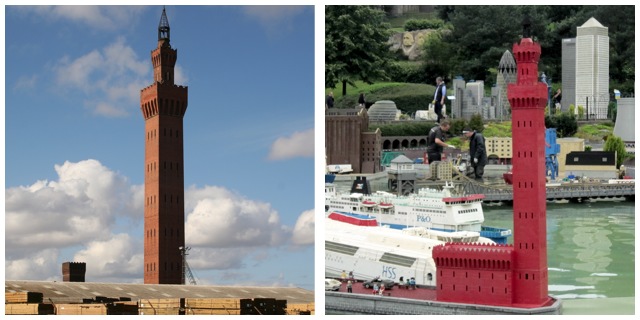
The dock offices – a rather imposing building spoilt by pointless construction of a road bridge made redundant almost as soon as it was complete because hardly any trains use the line it crosses. (My main memories of this are going with my father to collect his wages and a rather striking warning poster of a crane driver having his fingers amputated by his crane door.)
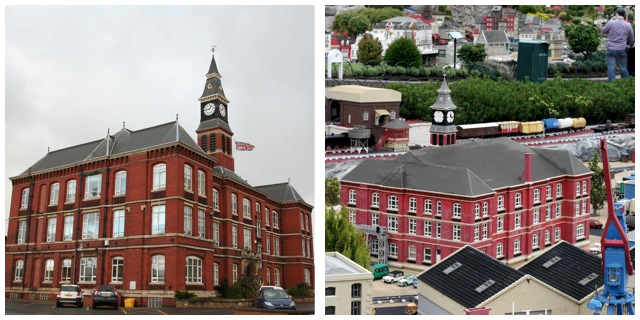
The flour mill – a huge building on the side of the almost entirely disused Alexandra Dock. I very nearly rented a flat here when I was narrowly losing (by 11,000 votes, give or take) the Grimsby seat in 2000-2001, but was put off by tales of rat infestation.
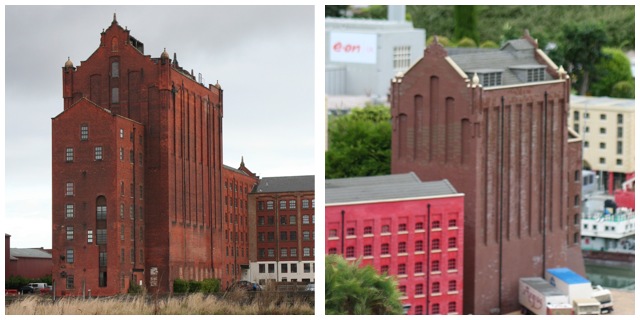
Corporation Bridge – allegedly functional, but sadly unused, lifting bridge that spans the aforementioned Alexandra Dock.
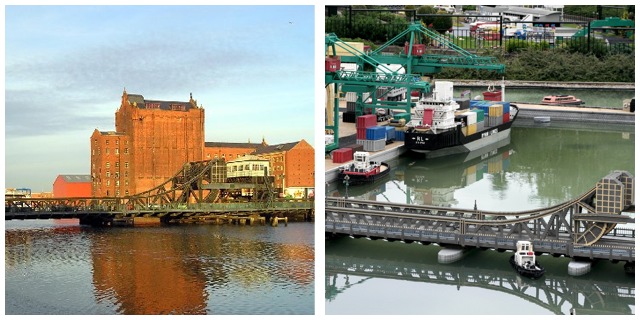
And there you have it. Independent evidence that Grimsby is the greatest place on earth.
I suspect that excluding capital cities, nowhere else can boast that sort of representation at Legoland. I also wonder if on a landmark per capita basis it even beats London.
As Elton John said: “Grimsby, a thousand delights couldn’t match the sweet sights of my Grimsby. Oh, England is fair, but there’s none that compare with my Grimsby.”
I probably wouldn’t make much money out of political betting.
I did try once: when I was the Conservative candidate for Great Grimsby and spent an afternoon touring bookies to see if they would give odds on the seat. All politely declined, apologetically telling me that the result was a foregone conclusion. When I said I was actually looking for odds on the scale of my defeat (I wasn’t stupid, even if I was a bit wet behind the ears back then) their sympathy turned to suspicion, as if I could somehow engineer a particular majority to ensure I won the bet.
It never occurred to them that if the Conservative organisation in Grimsby were capable of such a feat, it might have used its incredible power to win the seat, rather than just a few quid from them.
Again, Ladbrokes aren’t offering odds on the Grimsby seat, but are on a lot of other seats, including the three in Wandsworth (their site it run by scripts, so it’s difficult to link to the page, but you can find the latest odds under ‘Politics’, then ‘UK General Election’).
While I’m fairly confident I might break my losing streak this year – I’ve not been involved in a winning campaign since 1992 – I’m finding it almost unbelievable the Tories are such favourites in so many key seats, including all those in Wandsworth.
| Winner | Battersea | Putney | Tooting |
|---|---|---|---|
| Conservative | 1/20 | 1/100 | 1/3 |
| Labour | 7/1 | 12/1 | 2/1 |
| Liberal Democrat | 100/1 | 100/1 | 50/1 |
Unless I’m hoping for an upset (and obviously, I’m not) there’s not much to be made, for example in Putney a £100 stake on Justine Greening would win just £1. Even in Tooting I’d only win £1 for every £3 I bet.
Having said all that, after the week Gordon Brown’s had, maybe the odds aren’t so outlandish after all.
 Neighbourhood policing
Neighbourhood policing
Nothing to do with Wandsworth, but the picture is the badge of Grimsby Borough Police, which I spotted on a display at the National Policing Improvement Agency this week. Nothing directly to do with Wandsworth, of course, I spotted because I stood for Great Grimsby in 2001. But it is a little reminder that neighbourhood policing is nothing new.
Up until the mid- to late-sixties there were small borough police forces dotted all over the country (Grimsby’s was amalgamated with Lincolnshire in 1967). Grimsby would have served a population of around 80,000, less than a third the size of Wandsworth (around seven times the size of a Wandsworth ward on which Safer Neighbourhood Teams are based).
Grimsby, like all the other Borough Police Forces, was abolished following the Police Act 1964 in a bid to improve economy and efficiency by having larger policing units. I won’t comment on whether this was a good or bad thing; but just leave it as a reminder that the current vogue for community based policing is little more than a return to the historical roots for the police as a very local service in many parts of the country.
Crime in Wandsworth
It has not been a good week for Wandsworth when it comes to crime, with some high profile incidents. I refrained from commenting on them at the time since I didn’t think this the most appropriate place – this is not a ‘news’ blog and I can’t consistently provide details. I’m also very aware that not everything is for public consumption and I’d rather err on the side of caution than risk compromising ongoing police investigations. Having said that, I am also aware that an information vacuum causes its own problems.
There are, however a few points I’d like to make.
First on the Tooting murder and attack I would like to extend my sympathies the family of Ekram Haque. To have lost a father and grandfather in such a meaningless way is a tragedy I cannot begin to understand.
If anyone has information regarding either of the incidents I would urge them to contact the police.
I would also like to congratulate the police on the speed with which they have responded, not only in making arrests to bring the perpetrators to justice, but also to provide reassurance to the community.
The other ‘bad’ news was the two unrelated shooting incidents in Battersea. Again, congratulations to the police in moving so quickly to make arrests.
I know events like this do nothing to make communities feel safer, even more so when they happen so close together. But I would reiterate that Wandsworth is a relatively safe borough. We are part of an inner city, and that naturally brings problems – we’re never going to complete with a sleepy village on low crime rates – but compared with the rest of London and other cities across the country we are a safe place to live, work and play.
What’s more, despite the Tooting attacks which appear to be racially motivated (both involved black youths attacking Asian victims) we are a harmonious community – despite the diversity we all get along well.
This isn’t to say we can be – or are being – complacent but incidents like these are thankfully rare in Wandsworth and everyone in the community safety partnership are working hard everyday to keep it that way.